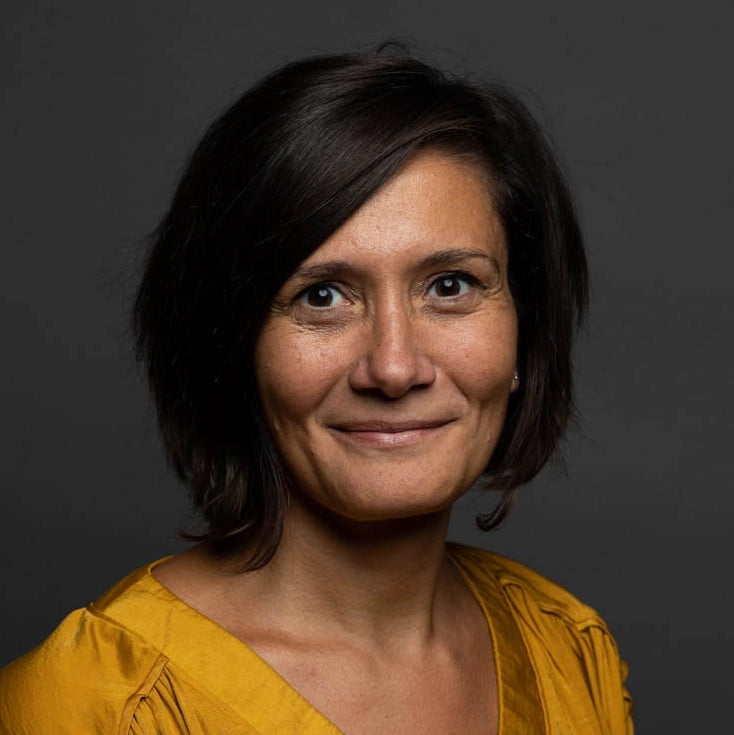
Susi Dennison is a Senior Policy Fellow and Director for the European Power Programme at the European Council on Foreign Relations (ECFR). She kindly accepted to give Educ-EU an update on the state of play of European migration and asylum policy, two years after the European Commission’s proposal for a new Pact on the matter and a few months after the French Presidency of the Council of the EU. The latter had announced progress had been made in reaching an agreement among member states.
Q1. What are the key elements of the Commission’s proposal for a Pact on Asylum and Migration, and how does it build upon, or differ from previous EU initiatives in the matter?
Three elements of the Pact on Asylum and Migration – which was initially proposed in September 2020 – were adopted at the end of the French Presidency. These were a negotiation mandate for the Eurodac regulation on the database for asylum seekers and irregular migration; a negotiation mandate for a ‘screening regulation’ to standardise rules for entry screening across the EU, and a ‘solidarity declaration’, providing for a voluntary mechanism to enable burden sharing by other EU states to take pressure off EU external border countries. 18 member states signed up to this.
These measures are a result of increased political will to co-operate at EU level on migration– which has been noticeable in responses to refugees since Russia’s invasion of Ukraine in February 2022. However, in practice it does not change much concretely. The mechanism for solidarity is still based on member states opting in or out. This is not a decisive step change in member states’ willingness to look at migration as a European sovereignty question.
If the EU were genuinely sovereign on migration, it would be able to implement a migration policy for arrivals into the EU that responded to its demographic and labour market needs, underpinning the competitiveness of EU business. Freedom of movement within the EU would not be called into question, as immigration into the EU would complement migration between EU states, compensating for brain drain and skills shortages where they occurred. A humanitarian component of the EU’s migration policy – the ability to accept , in line with EU states’ legal obligations under the 1951 Refugee convention – would also be unchallenged, as being a reflection of EU values. Third countries would not see potential in the weaponisation of migration (‘’ opening the tap’’ on migratory routes to the EU to put pressure on external borders) since the EU would have the systems in place to deal with peaks and troughs in the flows of arrival into Europe.
The current reality remains a long way from this picture. Migration, and a perception that arrivals into individual member states and the EU as a whole are out of control, remains a pervasive concern for EU citizens. In the Spring 2022 Eurobarometer, immigration was the third largest issue facing the EU, below only the economic situation and climate change. It remains a highly politicised topic, perceived by member state governments as a threat.
Q2. Over the past few years we have seen Belarus weaponising migrants to try and destabilise the EU’s eastern border even before Putin’s war in Ukraine had triggered new waves of refugees pouring into the EU over the course of just a few weeks. Do you think such events have influenced the national governments positions regarding migration?
They have influenced them certainly, but not positively, in terms of the EU building its resilience to weaponisation of migration. EU governments remain very nervous about the migration file, and demonstrate themselves to be collectively and individually vulnerable to the manipulation of migration by other actors. Clear examples include the Turkish threats to ‘turn on the tap’ in the context of the renegotiation of EU support package for refugees in Syria in 2021 if the EU offer did not meet their demands, and Belarus’ decision in the winter of 2020-21 to traffic people to the Polish border – and Warsaw’s refusal to co-operate with the Commission in handling the situation at an EU level. In neither situation would the third country in question have deemed it useful to act as it did if the EU had not appeared likely to respond to the coercion. Morocco’s weaponisation of African migrants at the Spanish border in the summer of 2021 was particularly notable for the results it achieved. As a result of this perceived pressure, in March 2022, the Spanish government conducted a “volte face”, offering autonomy to Western Sahara, infuriating Algeria despite the growing need for a strong relationship around energy, and reversing a long-standing position on the conflict. This decision can only be understood in the context of ongoing concerns around the domestic political impact of a surge in migrant arrivals in Spain.
The challenge is that the migration threat in Europe is a result of insufficient political will to invest and coordinate, not a question of actual numbers. We see a sort of race to the bottom between member states, in which EU governments, fearful of losing their next election, are all panicked by the events taking place in neighbouring states. But by emulating each other’s focus on tightening borders, rather than building a narrative which counters the political fears and enables real coordination, they are sadly only perpetuating the . Ironically the refusal to tackle the problem through pooling sovereignty at a European level, which would be more effective, exposes national governments further to criticism and support for populist parties, with voters frustrated at apparent lack of control over the issue.
Q3. The French presidency of the Council of the EU announced at the end of June that it had made some progress on the files of the Pact. How would you assess this progress, and have things kept evolving since then?
The French presidency has built upon the momentum in dealing with Ukrainian refugees during Russia’s war – including a far more welcoming culture than Syrians and others received in the 2015 refugee crisis, willingness to use the temporary protection directive to allow greater freedom of movement for refugees around the EU for a time limited period, which had been in place since 2021 but had not yet been implemented. But I would judge the steps forward, as described in the first answer to be relatively minimal compared to the scale of the challenge to achieve “migration sovereignty”, and largely due to the political moment that Europeans found themselves in, rather than particular leadership by the French presidency.
Since the outbreak of Russia’s war on Ukraine, Europeans’ sense of insecurity has contributed to a sort of permissive consensus in the first wave of fear – enabling policymakers to allow themselves to deepen EU level co-operation on many aspects of sovereignty ( in the economic field, putting in place sanctions, through security co-operation including on military aid to Ukraine as some examples), as part of building up our ability to manage our interconnectedness in a challenging environment.
But since then this same insecurity has contributed to a number of EU governments – Italy, Sweden etc – this summer- moving further right, with voters being persuaded again by a nationalist rhetoric as a solution to their fears. We are already seeing in the actions of the Italian government, pushing back ships carrying migrants away from their coastline to Corsica – that there is an intention to harden their stance on immigration – and the resulting intra EU disputes over responsibility taking over the vision of solidarity expressed in the pact. It could be that we may come to see the achievements on the migration pact under the French presidency as a “high water mark” on European co-operation on migration in 2022 rather than the beginning of a trend towards deeper EU level co-operation.
Q4. In your view, what are the key loopholes of the Pact and how could it be made better?
What is still missing is largely political will. In the European Sovereignty Index which we carried out at ECFR earlier this year, it was clear that migration was one of the few areas of European power where the commitment to act at a European level did not outstrip the capabilities to do so. This remains the case. Migration is jealously guarded as a national sovereignty issue, when it needs to be looked at strategically as a question of European sovereignty.






